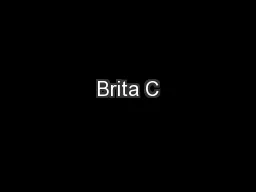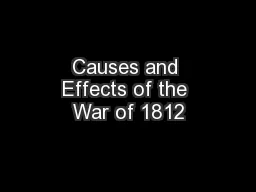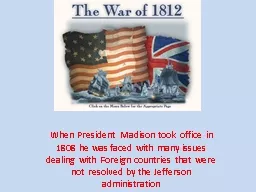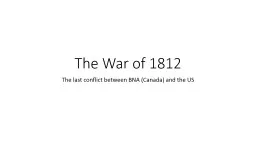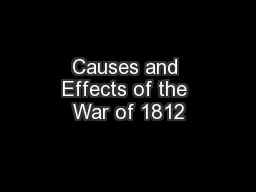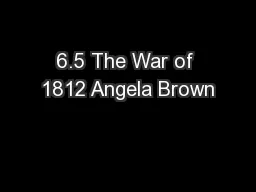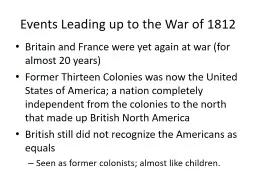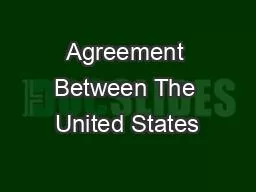PPT-The War of 1812 the War of 1812 is not just a war between Canada and the United States,
Author : olivia-moreira | Published Date : 2018-03-23
the Americans did have just cause for a war with the British War of 1812 The Napoleonic Wars 17991815 British adopted policies that angered the Americans Napoleon
Presentation Embed Code
Download Presentation
Download Presentation The PPT/PDF document "The War of 1812 the War of 1812 is not j..." is the property of its rightful owner. Permission is granted to download and print the materials on this website for personal, non-commercial use only, and to display it on your personal computer provided you do not modify the materials and that you retain all copyright notices contained in the materials. By downloading content from our website, you accept the terms of this agreement.
The War of 1812 the War of 1812 is not just a war between Canada and the United States,: Transcript
Download Rules Of Document
"The War of 1812 the War of 1812 is not just a war between Canada and the United States,"The content belongs to its owner. You may download and print it for personal use, without modification, and keep all copyright notices. By downloading, you agree to these terms.
Related Documents


